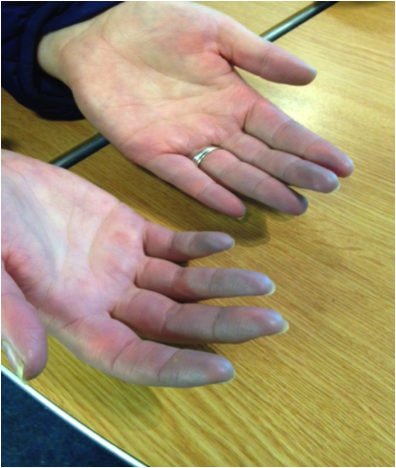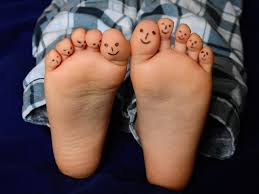HOW PODIATRY CAN HELP
February is Raynaud's Awareness Month
We need you to help increase awareness and understanding of Raynaud's which is a common condition affecting 10 million people in the UK yet so many remain undiagnosed or just deal with the impact. Download the Raynard's information pack provided by Scleroderma & Raynaud’s UK (SRUK) which is the only UK Charity dedicated to improving the lives of people with Scleroderma and Raynaud’s discussing:
- The Signs and Symptoms of Raynaud’
- The Difference Between Primary and Secondary Raynaud’s
- How Raynaud’s is diagnosed
- Managing Your Condition
- The Link Between Raynaud’s And Scleroderma Explained
In response to cold temperature changes, the small blood vessels in our extremities such as our fingers and toes temporarily contract (known as vasospasms) which can lead to a change of colour in the skin and temperature. The skin may look paler for example and become colder to touch. This is because the blood supply to the extremities has been restricted. This change in our circulatory system is our body’s natural response to heat loss and it occurs to ensure that our vital organs remain at their optimal temperature when we get cold. Once our hands and feet return to a warmer climate, the small blood vessels relax allowing the blood flow to return to normal and the skin becomes pink and warm again.
WHAT IS RAYNAUDS
In people who have Raynauds, the small blood vessels in the extremities are over-sensitive to temperature changes, so the response occurs much more readily. It is also exaggerated and prolonged. As a result, the changes are more severe; the affected skin may change colour from bright white to purpley / blue and can feel freezing cold or numb. As the blood flow returns to the affected areas, the skin may turn bright red and throb, tingle or burn. This exaggerated response is known as a ’Raynaud’s attack’. The attack can last from several minutes up to several hours and can be very uncomfortable or even painful for some, making everyday activities difficult.
These attacks usually occur in the fingers and toes, but all extremities can be affected such as the nose, ears, lips and nipples.
PROBLEMS WITH
RAYNAUDS
For most people, these symptoms are usually minor and eventually everything returns to normal relatively quickly without any complications. However, repeated episodes of an attack can lead to dry, devitalised skin and changes in nail shape and texture. In more extreme cases, injury to the soft tissue can occur resulting in Chilblains, skin sores / ulcers or even possible gangrene.
TAKING CARE OF YOUR FEET.
If you are susceptible to Raynauds, it is important to keep yourself warm, so it is advised to listen to the weather/temperature forecasts and dress accordingly.
Fibres such as wool or bamboo are good insulators and several light layers, rather than one thick layer, traps more air and heat.
Moisturise your feet as often as possible, avoiding in between the toes, to help with dry skin and prevent fissures (splitting).
Choose good supportive footwear that doesn’t rub on your skin and allows room for thick, warm socks or tights.
A thick rubber or composite soled shoe may help to protect against the cold ground.
Some skin preparations which include ingredients such as capsaicin or ginger can help to stimulate the circulation.
Keep active
as this improves circulation, and
have plenty of hot drinks and food throughout the day.
In severe or recurrent cold weather problems in the feet, consult your GP who
may advise a prescription drug to relax the constricted vessels and thus
improve blood flow to the extremities.
HOW CAN PODIATRISTS HELP
Remember to inspect your feet daily and take note of any changes in your skin. If you are concerned seek medical advice from a podiatrist or GP.
If you have bony feet or foot deformities, insoles can help to cushion the bony areas and provide better protection. Thermal insoles can also help to keep the feet warm, these can be prescribed by a podiatrist.
If your nails are thickened and have changed shape making them difficult to manage see a podiatrist regularly to get them cut and filed.






